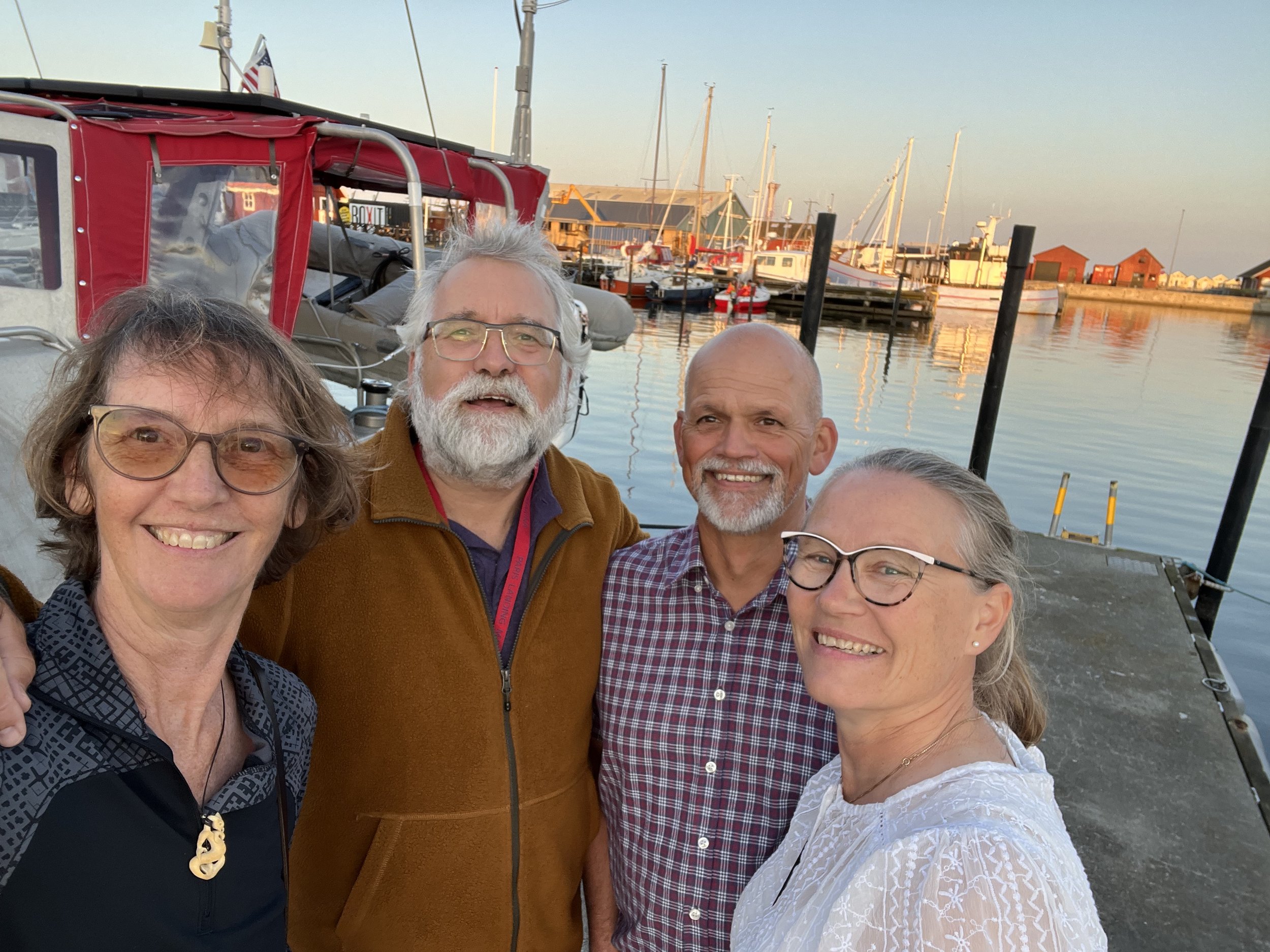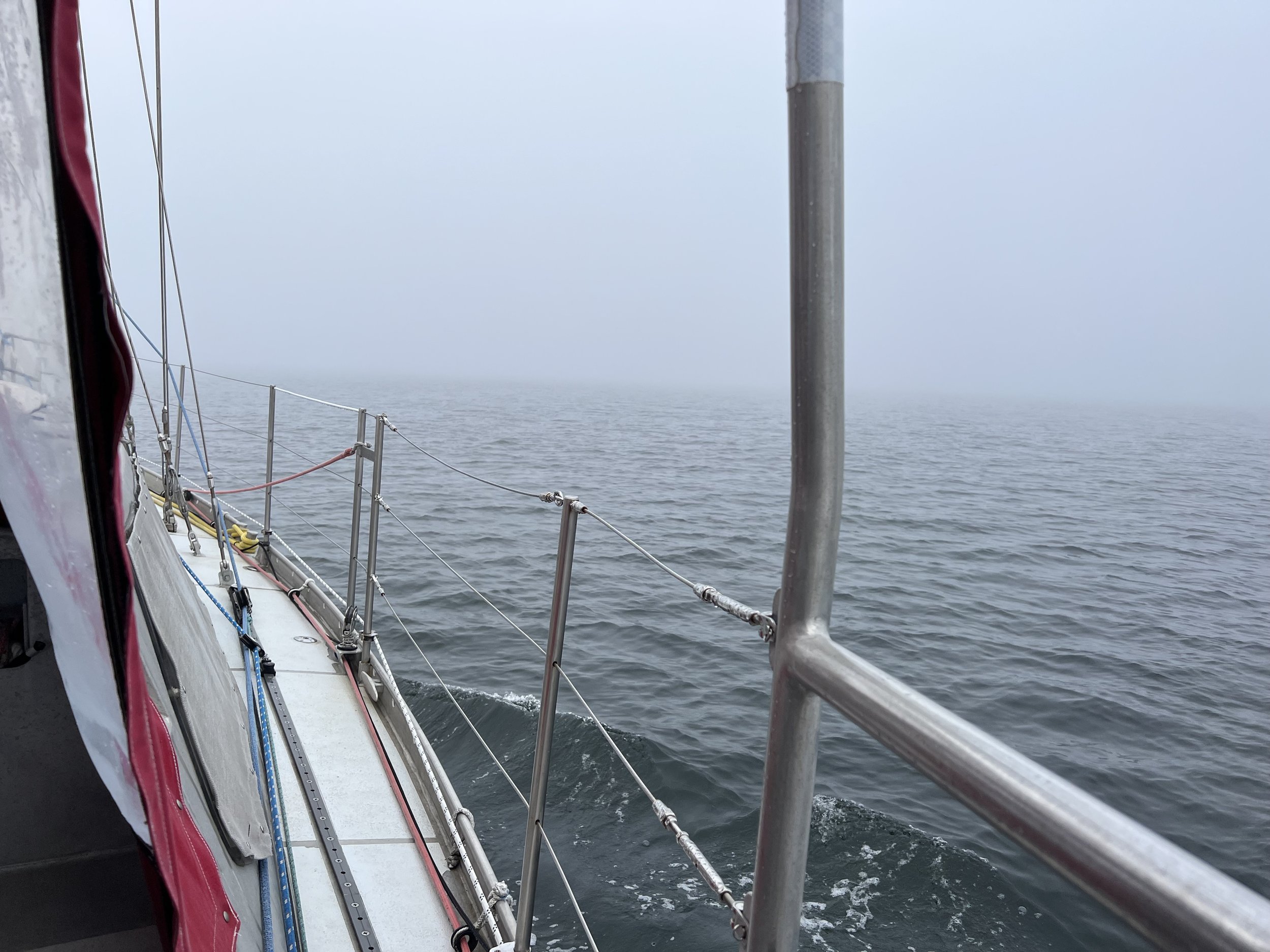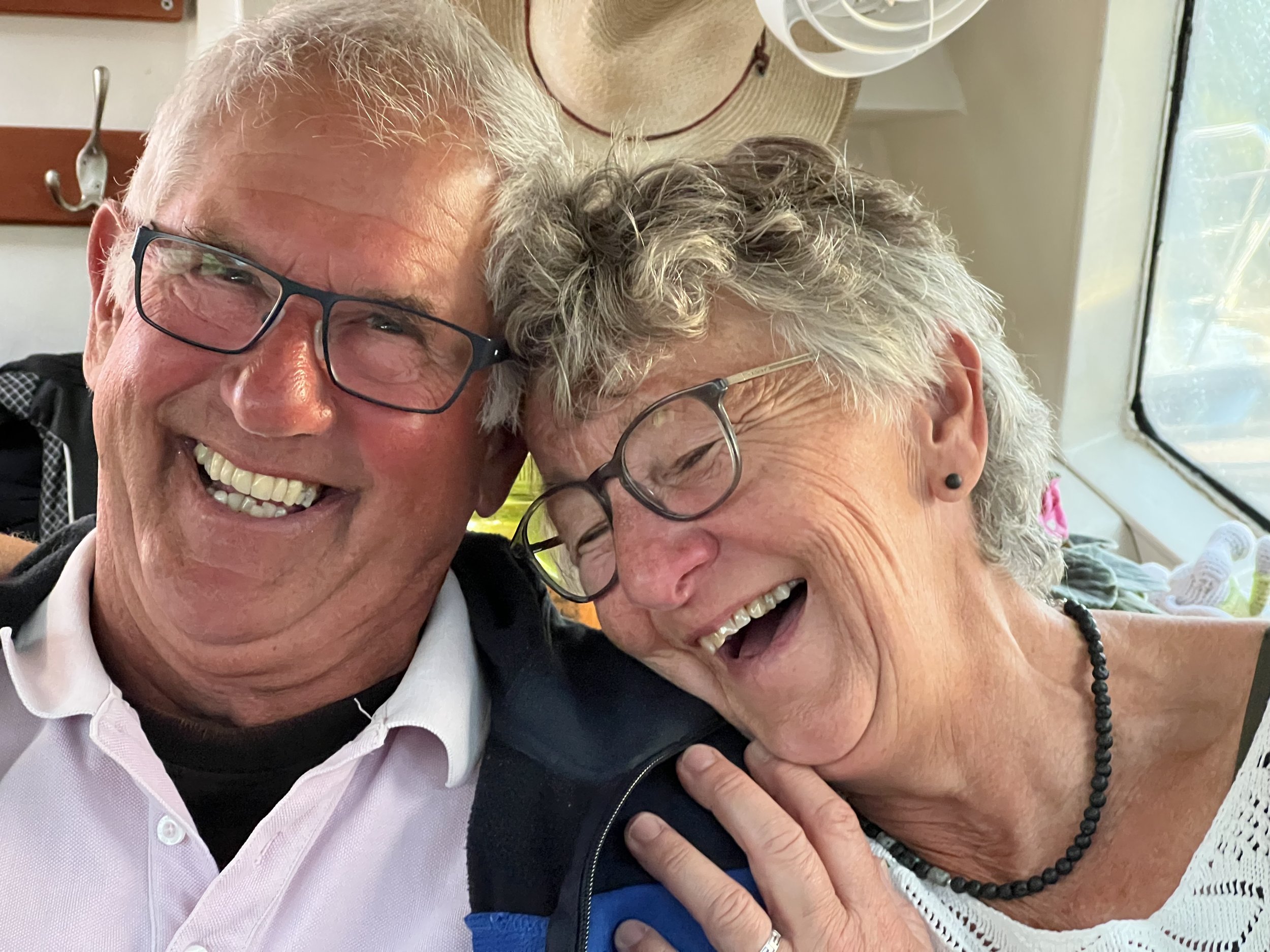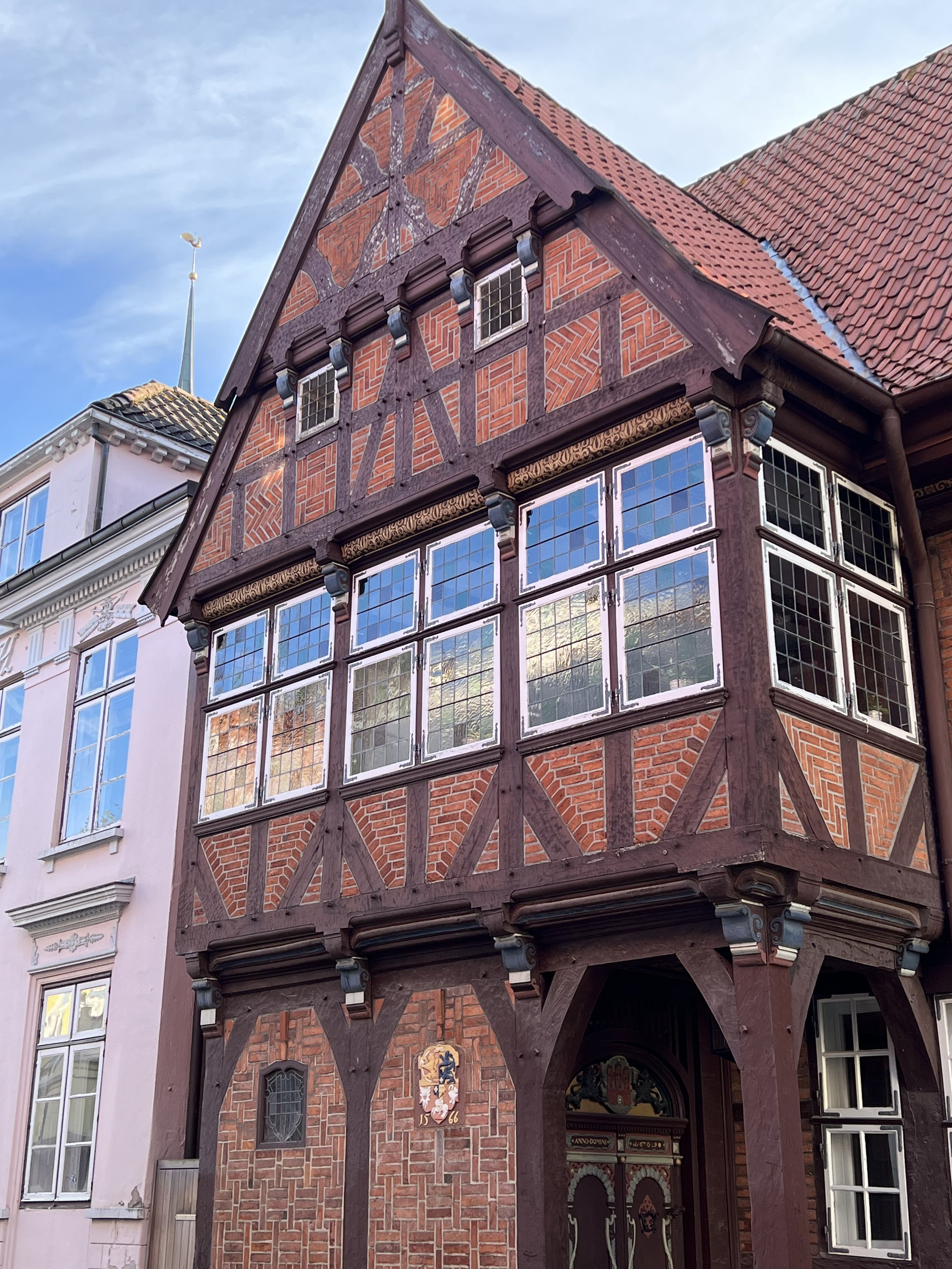Taking the Shortcut.
Empty marinas become more common.
Leaving Sweden we motor across the Kattegat, the body of water that separates Sweden from Denmark. We stop for a day on the Danish island, Læsø. The difference between the two is immediately apparent - sand.
Sand dunes on Læsø.
Only 30nm west of Sweden and we are on an island that is basically a sandbar. There is one boulder in the island, which is listed as a tourist attraction (Store Pigesten, if you don’t believe me). We were not here to see rocks however, we had come to see the houses thatched in Eelgrass and visit the Salt factory.
Eelgrass is a stringy weed that we were only just begining to encounter. It can mess up the propellor if you run through a patch, and it catches on the fishing line. Ask us how we know. It is quite common here on Læsø, so much so that it was collected from the beaches, dried, and used to thatch the half timbered houses. We found a number of houses thatched this way, some in better state of repair than others, including one house where they were actually working on the roof. We saw the rolls of Eel grass, talked to the builder and found out the grass is laid about a meter thick and can last for over 200-400 years, much longer than a traditional thatch roof (presumably with regular maintenance).
So shaggy.
Then it was off to find the Salt factory. We rented bicycles for the day and enjoyed the flat landscape., cycling along the south coast and tidal saltmarsh. In the Middle Ages Læsø was famous for its salt industry. It declined over time due to deforestation but since the mid 1980’s has been resurrected as an archaeological experiment.
The island is situated over a layer of blue clay which retains the sea water and concentrates it over time. This water, with a salinity of 12-14%, is pumped up and delivered to tanks in the many buildings making up the factory.
The salt factory buildings with insulating turf roofs.
The water tanks are heated from below by wood burning ovens. After three days the salinity has increased sufficiently for salt to start crystallizing on the surface, where it is collected every morning.
A new tank of water is kept moving as it slowly concentrates over the first three days of heating.
The morning's harvest of salt from one tank.
Unfortunately we were too late to see the collection of salt, but the baskets of freshly collected salt draining on the tank edge was pretty impressive. Along with the salt crystalizing on the surface, calcium carbonate also precipitates out and is removed daily.
The crystals were beautiful, and so big. It tasted really good too. After drying for a few days it gets packed up, ready for sale.
We cycle back to Helacious and the next day leave for mainland Denmark.
It is now late September and we are on a bit of a mission to make tracks. Having said that we could not pass by our friends Jette and Peter in Aalborg. We met them in Dominica over 3 years ago, where we were all part of the same covid pod. It was fun to catch up – thank you so much for your hospitality and route planning advice!
We continue south, down the eastern coast of Denmark. So different from the coastline we have been looking at all summer. Here the cliffs are made of sand and the grassy hills roll away to the hinterland. Unfortunately, we do not have the time to explore Denmark fully. We travel all day, then pull into a marina or anchorage for the night, repeat the next day. The wind stops blowing and the fog descends. We are so glad to have the radar operating again.
A foggy day out on the water.
Once again the architecture tells us we are in a different country.
We sail on down out of Denmark and into Germany. Our friends Birthe and Jochen, who we first met about two years ago in Porto Santo, Madeira, and again a number of times in the Caribbean, live in Flensburg. We tied up in their home marina and with their help did a number of boat projects and a MASSIVE re-provision. Yes, some of that might be wine. Don’t judge!
We did also manage to find the time to be tourist for a day. Flensburg is an old port town, and home of Glücksburg Castle. Built in the 16th century it was the seat for the Danish monarchy for many years; the House of Glücksburg is related to almost all the European monarchies. It was a rainy day, so perfect to explore inside.
Inside the vaulted ceilings, spacious light rooms and beautiful wood floors made it a very liveable castle, as castles go. The chapel in the basement was lovely, with decorative painted ceiling and organ.
The paintings of previous residents made me smile. Such dandies and horrors!
The center of Flensburg was also interesting to wander around with the old facades and my favorite: little alleyways to explore.
We leave our friends after a wonderful visit and sail south to the entrance of the Kiel canal, our 61 mile shortcut to the North Sea. The next morning we tie up alongside a large tanker and enter the freshwater canal. The traffic through the canal was not too busy, but the boats were huge.
The canal was too long to complete in a day, in addition the weather was foul at the western end, so we took our time and stopped overnight in a couple of places. We met Anneke and Jacob, Dutch sailors who provided us with a wealth of information about sailing in the Netherlands.
Was it something we said?
One of the stops was Rendsburg, nothing particularly special, but once again, the character of the old buildings scattered throughout town made for a lovely morning stroll.
One of the more alarming things we came across in the transit of Kiel canal was this cable car. It transports pedestrians and a car, suspended under the railroad bridge, just about boat height above the water.
The following day we exited the lock into the Elbe River estuary, ready to enter the North Sea, the last stretch before reaching the Thames and our home for winter.
Last lock on the Kiel canal.
Follow our progress on our tracking page https://forecast.predictwind.com/tracking/display/SVHelacious/






























































